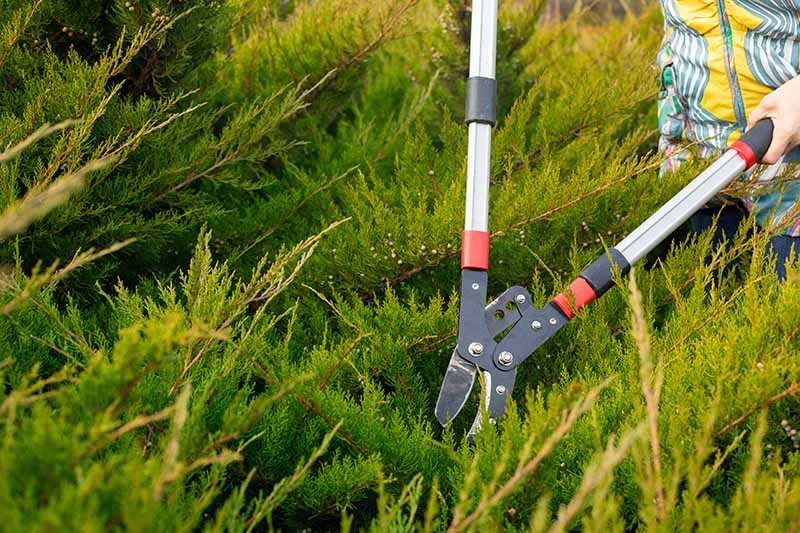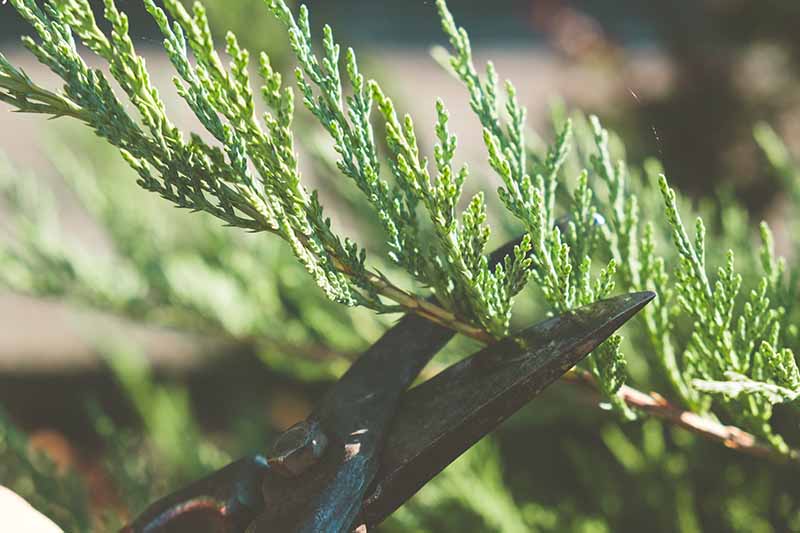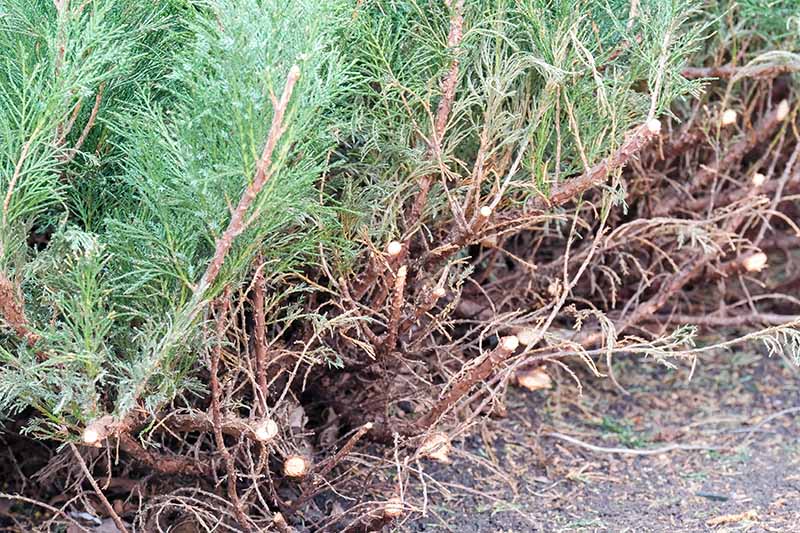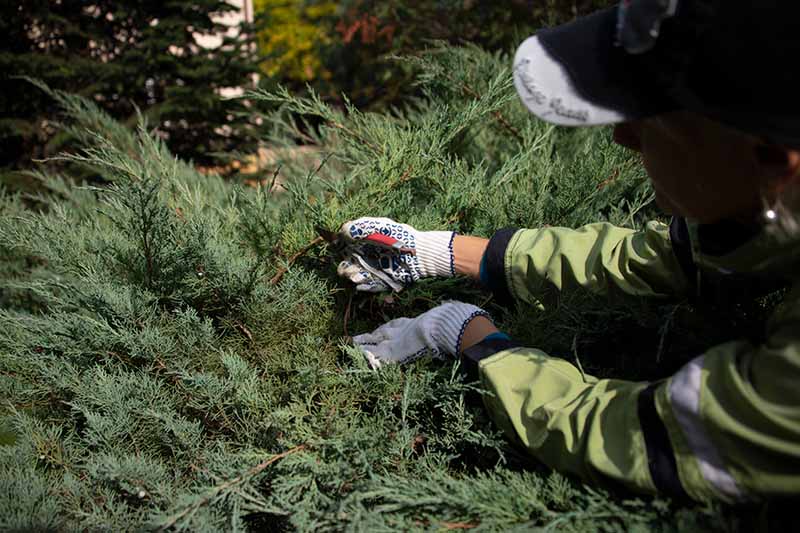Juniperus Chinensis Blue Point How to Keep From Freezing
Junipers aren't as forgiving as some plants when it comes to pruning. Do the job the wrong way and you'll end up with an ugly skeleton of a shrub with bald spots and bare branches.
On the bright side, junipers don't generally need much in the way of pruning, with a few exceptions.

We link to vendors to help you find relevant products. If you buy from one of our links, we may earn a commission .
While these plants are notoriously low maintenance, when trimming up is necessary, it's important to do it right. We'll talk about the how and the when in this guide.
Here is what's ahead:
What You'll Learn
- The Goal of Pruning Junipers
- When to Prune
- How to Prune
- Encouraging Bushier Growth
If you're ready to shape things up, get those pruners ready and let's go!
The Goal of Pruning Junipers
First, let's get the bad news out of the way. If you're hoping to reduce the size of your juniper rather than providing some shape, pruning isn't going to work very well.
The goal of taking the trimmers to your plant is to encourage bushier growth, remove dead wood, or create some shape. Otherwise, junipers generally don't need to be pruned at all.

Now, if you want to shape your shrub into a topiary or other formal shape, that's a different subject. That requires some pretty regular pruning and shaping.
What we're talking about is rejuvenation pruning of neglected plants with dead branches, or performing routine maintenance.
While we're on the topic, if you have a bush or tree that is bursting out of its spot or that keeps grabbing you as you try to walk past it on the sidewalk, your best bet is to dig up the plant, transplant it elsewhere, and replace it with something smaller.
Trimming won't keep it small and the plant will never look as good, nor grow as healthy, as it should.
Some species like boxwoods can be kept smaller through pruning and they'll still be healthy, but junipers just aren't one of those plants.
When to Prune
Technically, as long as the temperature isn't below freezing, you can prune at any time of year. Pruning when it's below freezing can seriously damage or even kill the plant.
Avoid doing the job in the fall, since this can increase the chance of incurring winter damage.
Early spring or late winter is best. You want to try to break out the secateurs before the tender new growth forms. It's healthier for the plant and looks better, to boot.
How to Prune
The method you'll use depends on the size of the branch you are cutting. Small branches that are the same diameter or smaller than a pencil can be snipped with a pair of secateurs, while slightly larger branches can be cut with pruners.
Whichever you use, don't cut beyond the branch collar. This is a slightly raised spot at the base of where the branch meets the trunk.

Large branches should be trimmed with a saw using a three-step method, as follows.
1. First, saw halfway through the underside of the branch a few inches out from the trunk.
2. The second cut should be made from the top side. About half an inch out from the lower cut, saw down through the branch about halfway at an angle, so you meet your undercut. The whole thing should now come away cleanly.
3. Finally, saw away the remaining stump, taking care not to cut past the branch collar. This prevents the weight of the branch from breaking it off as you cut.
If you trim back a branch beyond where the needles are growing, hoping to encourage branching, it won't work. Junipers form needles at the green tip of branches, and old wood won't form new needles.
If you need to trim a branch back past the point where the needles are, remove it entirely.

You should also remove any branch that doesn't have needles on it. Remember, it will never start growing new foliage.
Regardless of how many branches you remove from the plant, avoid pruning the central trunk, which is known as the leader. A healthy evergreen has one central trunk that the rest of the growth emerges from.
Plants with multiple leaders tend to be weaker and are susceptible to damage from wind and heavy snow. If your plant is young and has more than one central leader, remove all but one of them.
Remember that junipers are slow growers, so don't prune too much all at once. This is particularly true of plants in growing shadier spots. Anything more than a quarter of the plant at a time is too much to trim.
There's no need to seal the end of the cuts. The bush will do that itself, with the resin that flows inside the plant.
Encouraging Bushier Growth
If your goal is to encourage bushy growth, there are a few things to keep in mind.
First, shearing the plant isn't the way to go about it. Not only can this create dead spots, but it creates a thick outer layer of foliage that shades the interior.

New foliage emerges from the tips of the branches, so the only way to encourage bushier growth is to trim the young, green ends.
The most natural-looking way to do this is to clip individual green tips with a pair of secateurs rather than shearing the entire plant.
Source: https://gardenerspath.com/plants/ornamentals/prune-juniper/
Belum ada Komentar untuk "Juniperus Chinensis Blue Point How to Keep From Freezing"
Posting Komentar